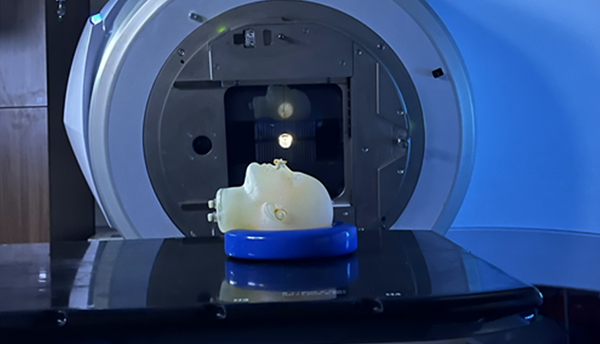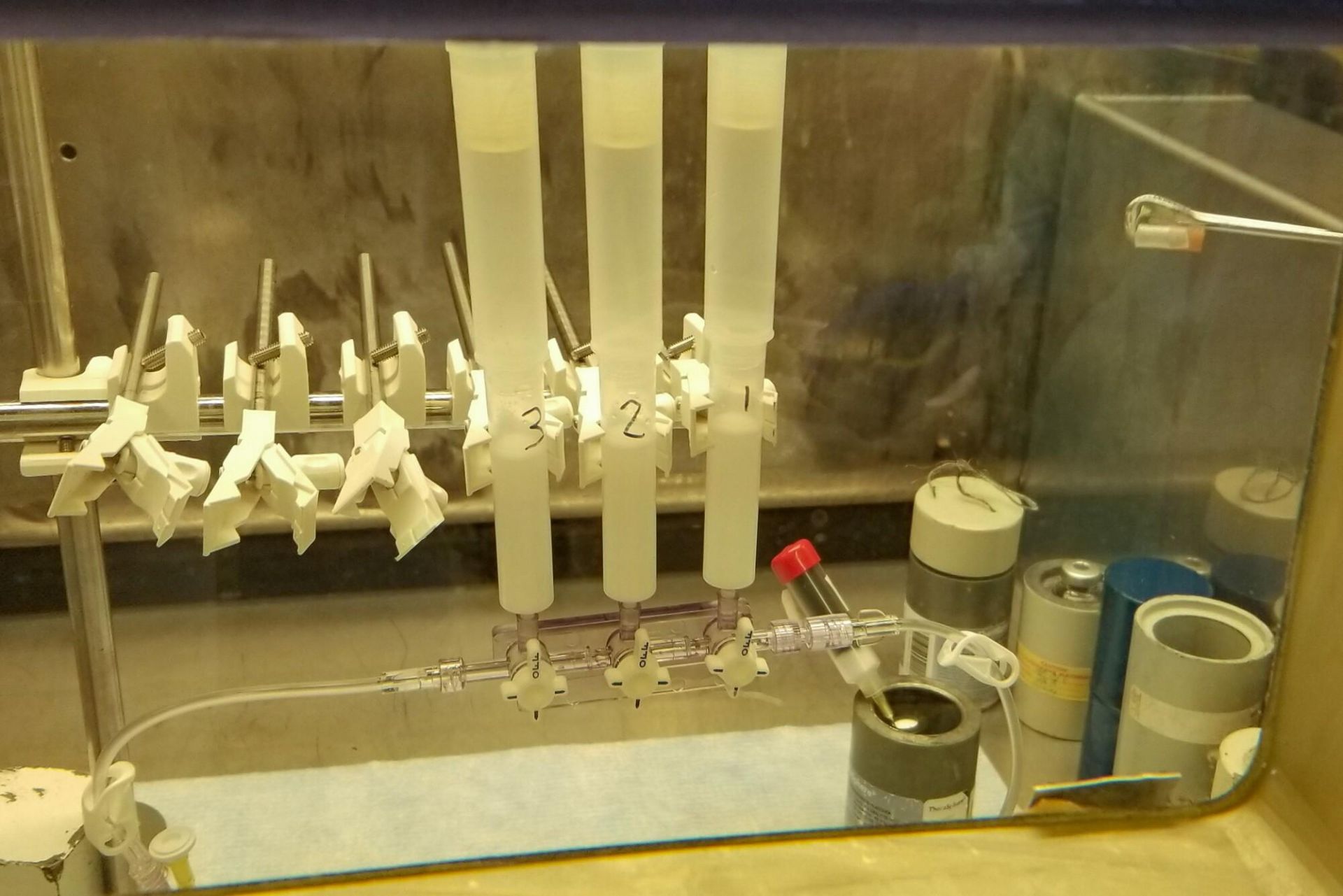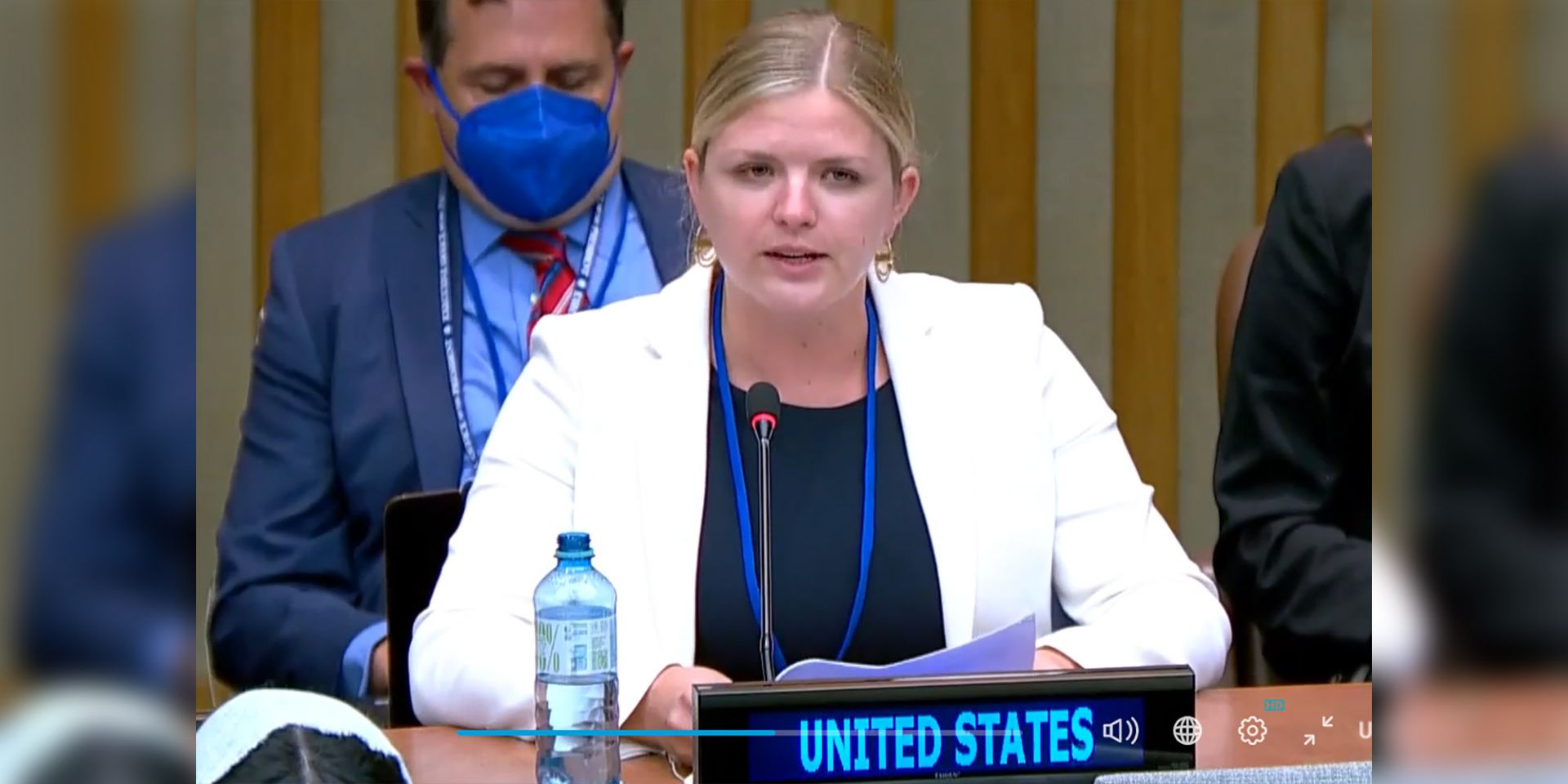A NIST head-shaped phantom is helping researchers improve radiation dose estimates for cancer treatment. (Photo: NIST)
In an article just published by the Taking Measure blog of the National Institute of Standards and Technology, Stephen Russek—who leads the Imaging Physics Project in the Magnetic Imaging Group at NIST and codirects the MRI Biomarker Measurement Service—describes his team’s work using phantom stand-ins for human tissue.
At-211 undergoes purification and a series of quality checks. (Photo: Don Hamlin/University of Washington)
The Department of Energy’s National Isotope Development Center (NIDC) on March 31 announced the successful long-distance shipment in the United States of a biologically active compound labeled with the medical radioisotope astatine-211 (At-211). Because previous shipments have included only the “bare” isotope, the NIDC has described the development as “unleashing medical innovation.”
[Click image for full view.] More than 20 African countries have no radiotherapy treatment facilities. Darker blue areas indicate regions of greater population density, while radiotherapy centers are marked with red dots. (Image: IAEA)
More people in low- and middle-income countries who have head and neck cancer may be able to access lifesaving radiotherapy after research supported by the International Atomic Energy Agency has shown that fewer—but higher—doses of radiation treatment resulted in clinical outcomes similar to standard radiotherapy treatments. Reducing overall treatment times for this type of cancer through a treatment regimen called hypofractionation could help countries navigate resource constraints and shorten waitlists, enabling more patients to receive treatment while also reducing the cost and duration of care. The IAEA announced the findings in a news article published January 22.
A clinical dose of At-211 is prepared at the University of Washington for use in a Fred Hutchison Cancer Center clinical trial. (Photo: UW/Don Hamlin)
Scientists in the Departments of Radiation Oncology and Medicine at the University of Washington (UW) and Fred Hutchinson Cancer Center (Fred Hutch) are directly targeting cancerous cells traveling through patients’ bloodstreams with diseases such as leukemia and lymphoma using an intravenous injection of the radioactive isotope astatine-211 (At-211). The work, its challenges, and its promise were described in a recent news release from the National Isotope Development Center (NIDC), which is managed by the Department of Energy’s Isotope Program.
The NNSA’s Savannah Blalock announces that the agency has reallocated $10 million to support peaceful uses. (Photo: NNSA)
The Department of Energy’s National Nuclear Security Administration has redirected about $10 million from the International Atomic Energy Agency’s low-enriched uranium fuel bank to efforts supporting the peaceful uses of nuclear technology and to fight cancer.








